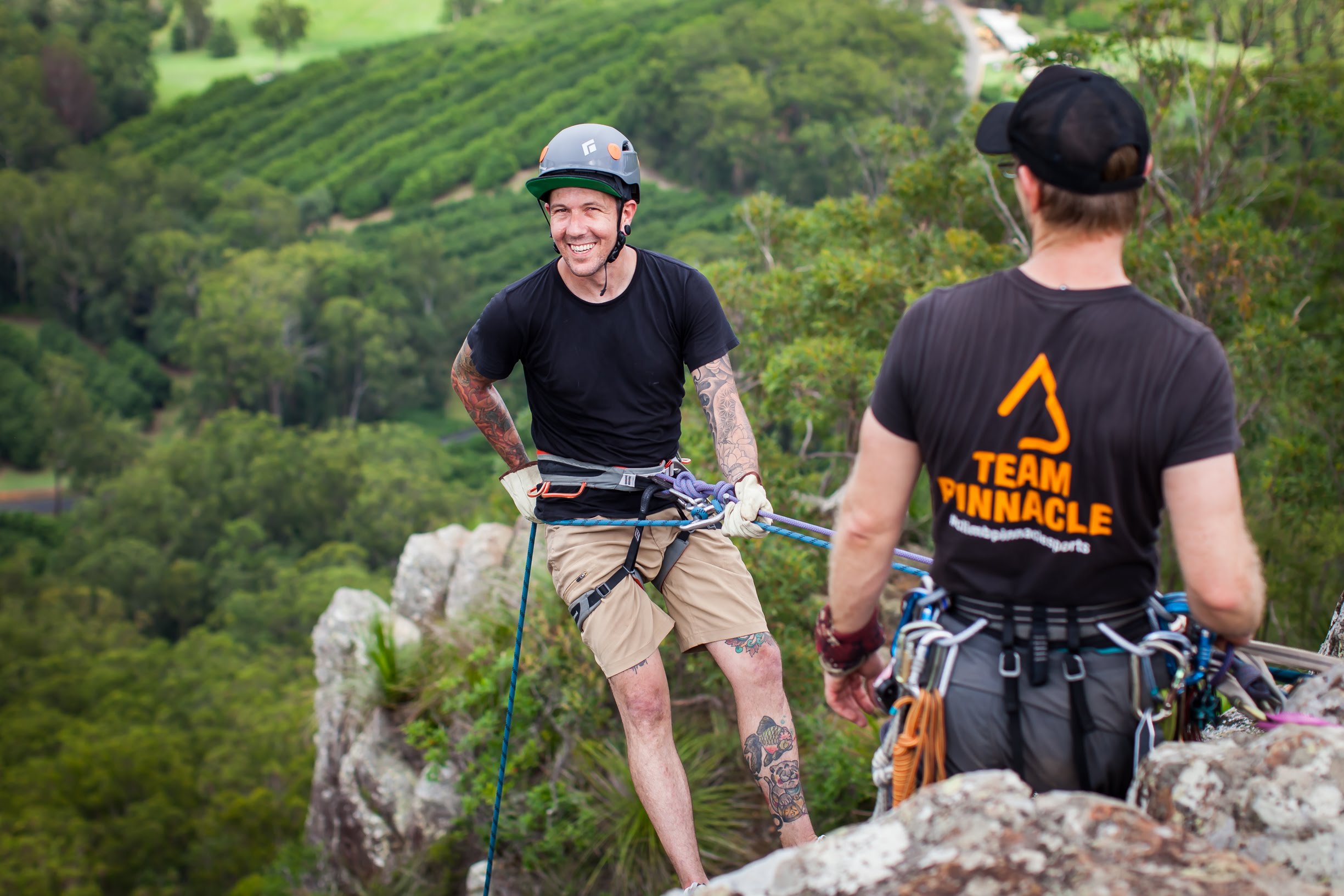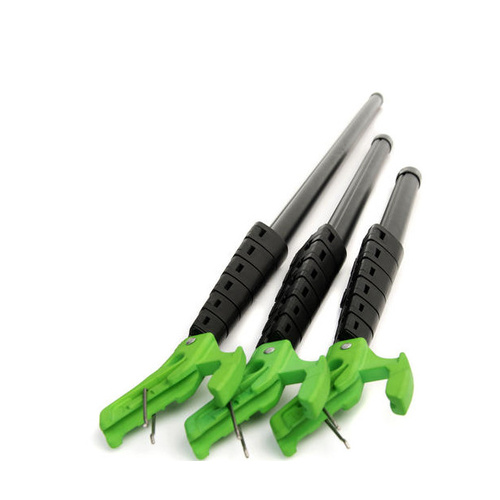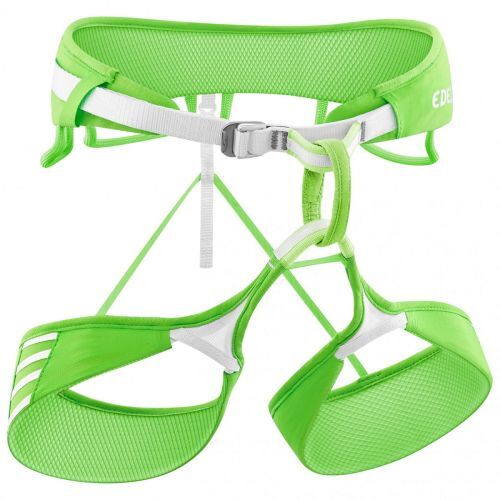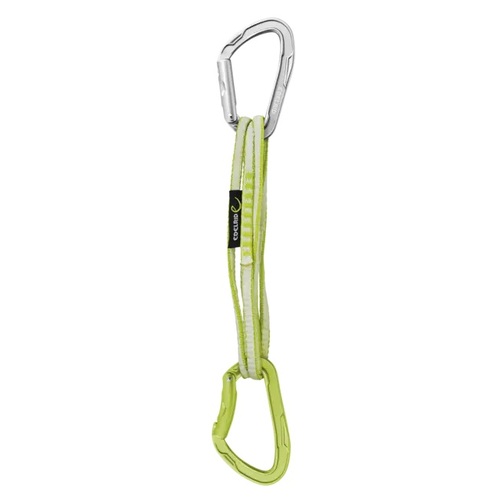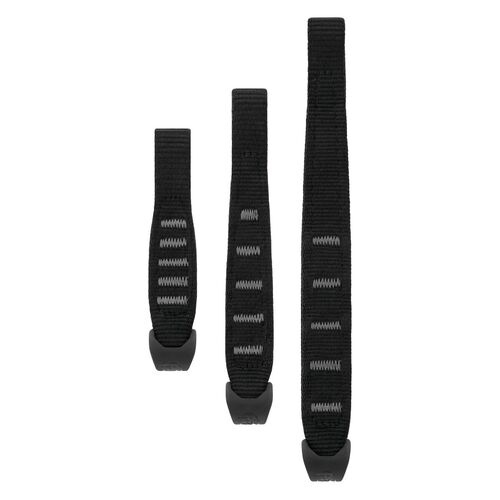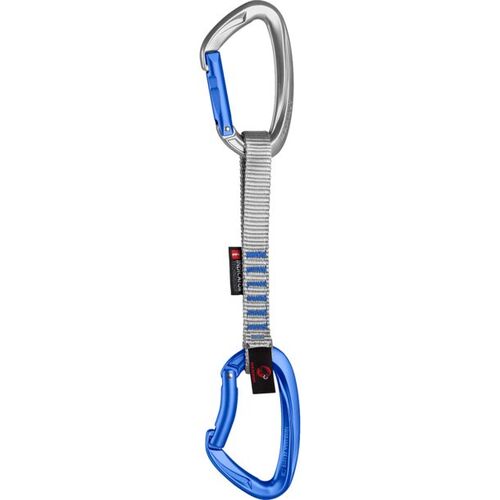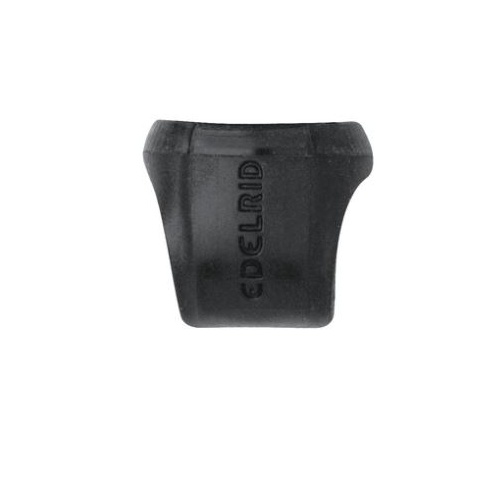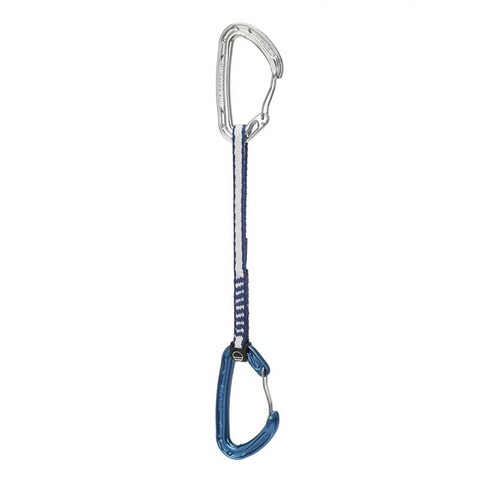The second generation of Edelrid's innovative and successful OHM is easier to use than ever thanks to a number of updates. The assisted-braking resistor for increasing the braking effect when climbing in rope teams with major weight differences has a swivel joint that improves the device’s freedom of movement. As a result, the clipping direction no longer matters when the device is clipped to the first bolt. The locking system prevents the device from opening accidentally and makes it far easier to insert the rope and remove the device when lowering.
Features
- Far lower forces are exerted on the belayer
- Lowering a heavier person in a controlled manner is far easier
- OHM is attached at the first bolt in the safety chain
- The device reduces the risk of a collision when falling on the first bolt
- Rope handling when belaying a lead climber not affected (no additional friction when paying out rope)
- “Makes the belayer 25 kg heavier”
- Minimum belayer weight: 40 kg
- For single ropes from 8.9–11.0 mm
Climbing partners with a significant difference in weight?
If there is a significant difference in weight between lead climber and belayer this frequently causes problems. This applies in particular to climbing couples, where the woman is often significantly lighter than her partner.
In the event of a fall, a lighter belayer can be suddenly pulled off the ground and hurled against the wall. In addition, when a belayer is pulled high off the ground, this significantly increases the distance that the climber falls. If the climber is still near the ground, belayer and climber might collide. In the worst-case scenario, the climber might hit the ground.
Using a weight bag to reduce the difference in weight is not possible all the time (nobody wants to carry a weight bag to the crag). In addition, weight bags restrict a belayer's freedom of movement. And even when using a weight bag, the belayer still has to supply the full braking force (with the associated risk of friction burns as the rope runs through belay device).
Edelrid's innovation to compensate for significant difference in weight between climbing partners
The design of the Ohm was underpinned with scientific research at the Institute of Mechanical Handling and Logistics (IFT), Stuttgart, Germany. It is an assisted braking resistor which is attached to the first bolt in the safety chain. In the event of a fall, the rope is pulled into the braking unit of the device and the fall is progressively arrested. This means the OHM does not brake the rope abruptly, but incrementally, so that the fall can be dynamically caught by the belayer. The OHM increases the friction in the safety chain, regardless of which belay device is used. This means the belayer has to apply considerably less manual force to the brake-side of the rope and is not suddenly pulled upwards or against the wall.
Due to its design, the OHM in no way restricts the handling of the rope for the lead climber. It does not increase the friction for the lead climber, nor does it negatively affect paying out the rope. The braking performance only comes into effect if a fall occurs. Due to the increased friction, lowering a heavier climber is also much easier to contol. Therefore accidents when lowering can be avoided.
In this way the OHM assists both the belayer and the lead climber.
The belayer will no longer be slammed against the wall. The lead climber can go right up to their climbing limit, with the reassuring knowledge that the belayer can secure them or that the landing will be soft.
The German Alpine Club (DAV) recommends that a lead climber should weigh a maximum of 10 kg more than the belayer (for example, belayer 60 kg/climber maximum weight 70 kg). If the lead climber is more than 10 kg heavier than the belayer, then weight or friction-enhancing measures are recommended.

